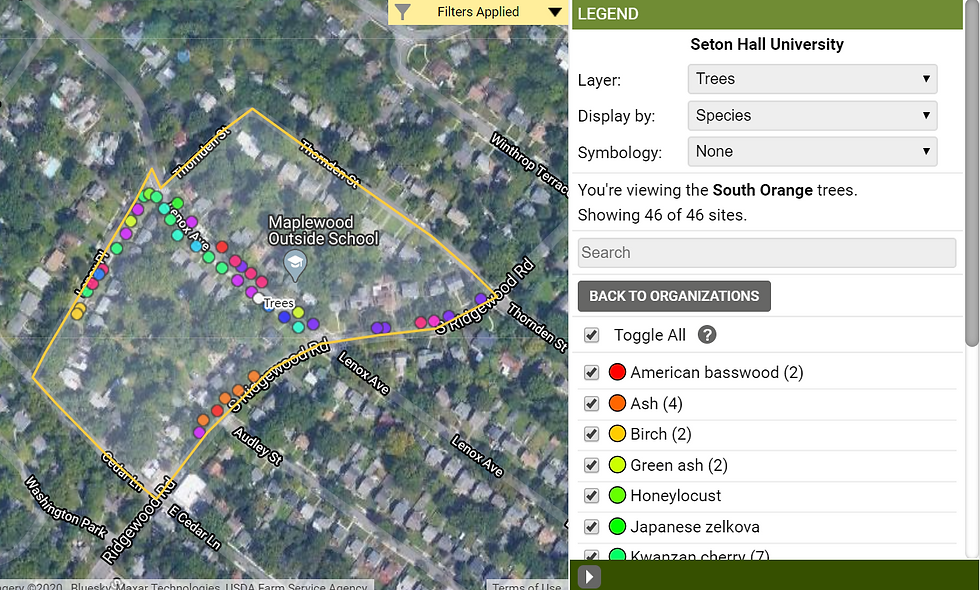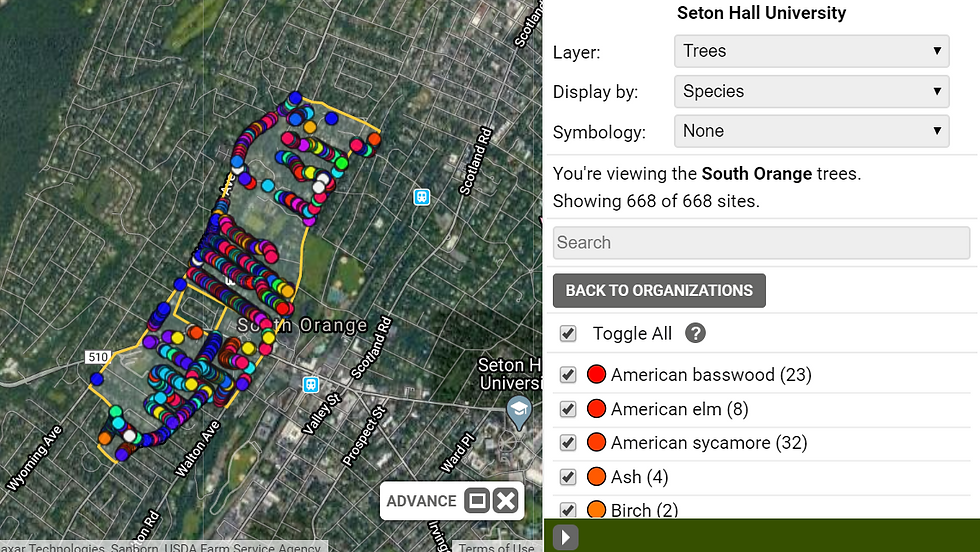Week 13: Closing the Gap
- oscarsolis9
- Apr 14, 2020
- 2 min read
This week since we are on track now to finish before 4/29/20, we only needed to cover two blocks. Those two blocks were blocks 2014 and 2015 which contained 46 trees in total. Interestingly in this group of blocks the single most common species of tree was the Kwanzan Cherry tree and not the White Ash tree. Although in total there were 10 Ash trees in this block group. Next week we plan to finally finish this project with only two blocks remaining.



The above chart suggests that the Kwanzan Cherry tree made up the majority of the top 10 tree species in this block group. Interestingly the Pin Oak, the White Ash, and the Red Maple share the same percentages on this chart making up 15% each. It seems the aesthetic of the Kwanzan Cherry tree seems to be more desired in this area compared to the other trees on this list. It is important to note that in total, the Ash trees still make up the majority of this chart if the White Ash, The Green Ash, and the broad Ash Tree category are combined. The Norway Maple also seems to be a bigger problem in this group block as it is an invasive species.


Above we see the new data set integrated into the base data set for the 31 blocks we must cover this semester. The White Ash still makes up about 30% of the most common tree species in this region. The Kwanzan Cherry and the Pin Oak make up about 14% each of this pie chart. It is clear that the White Ash tree will be the most common tree in this strip of South Orange. That being said the importance of the maintenance of these Ash trees is important to the ecosystem of South Orange especially for these vulnerable tree species. Hopefully the town will be able to use the data from TreePlotter to inform their decisions on how to improve South Orange.



Comments